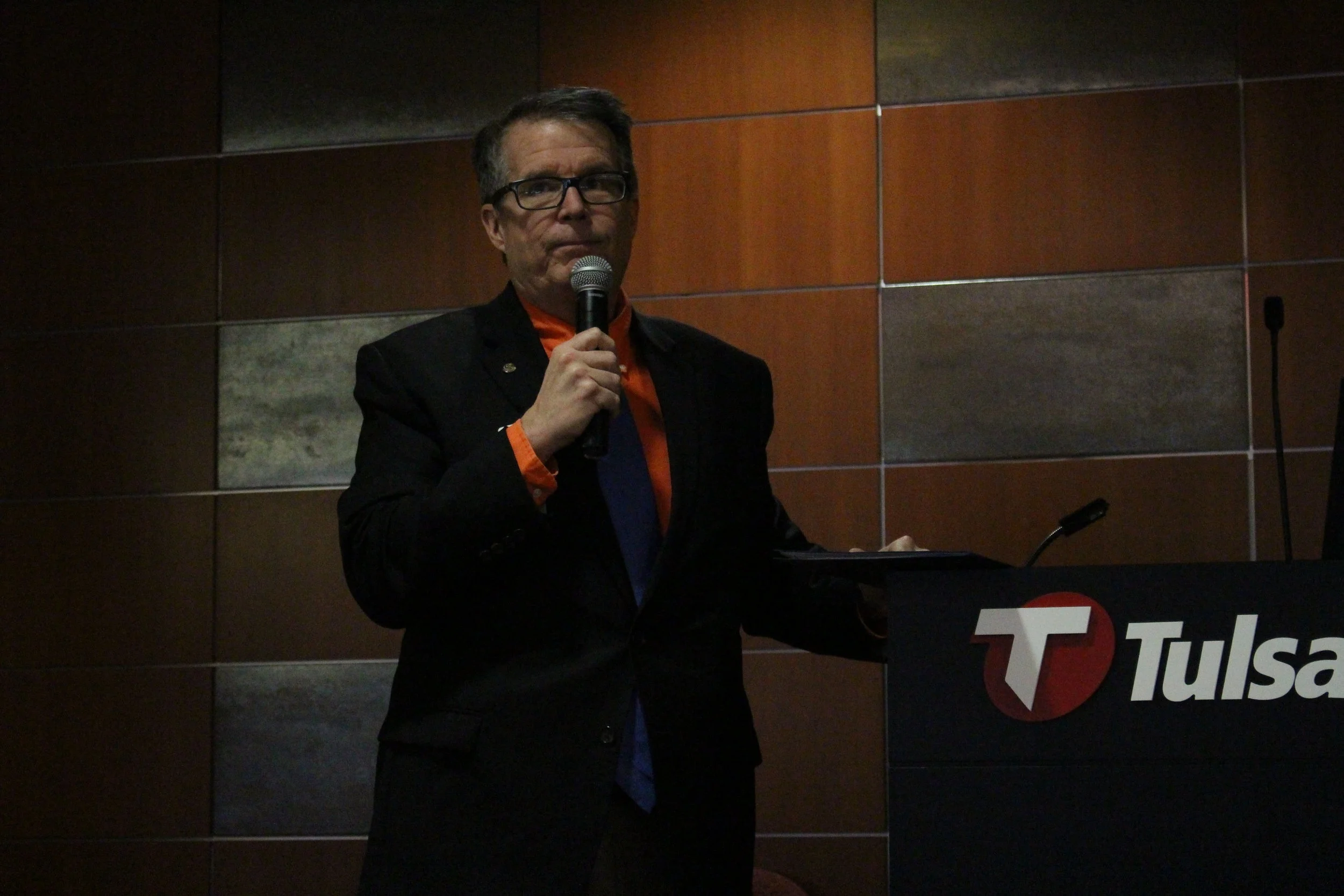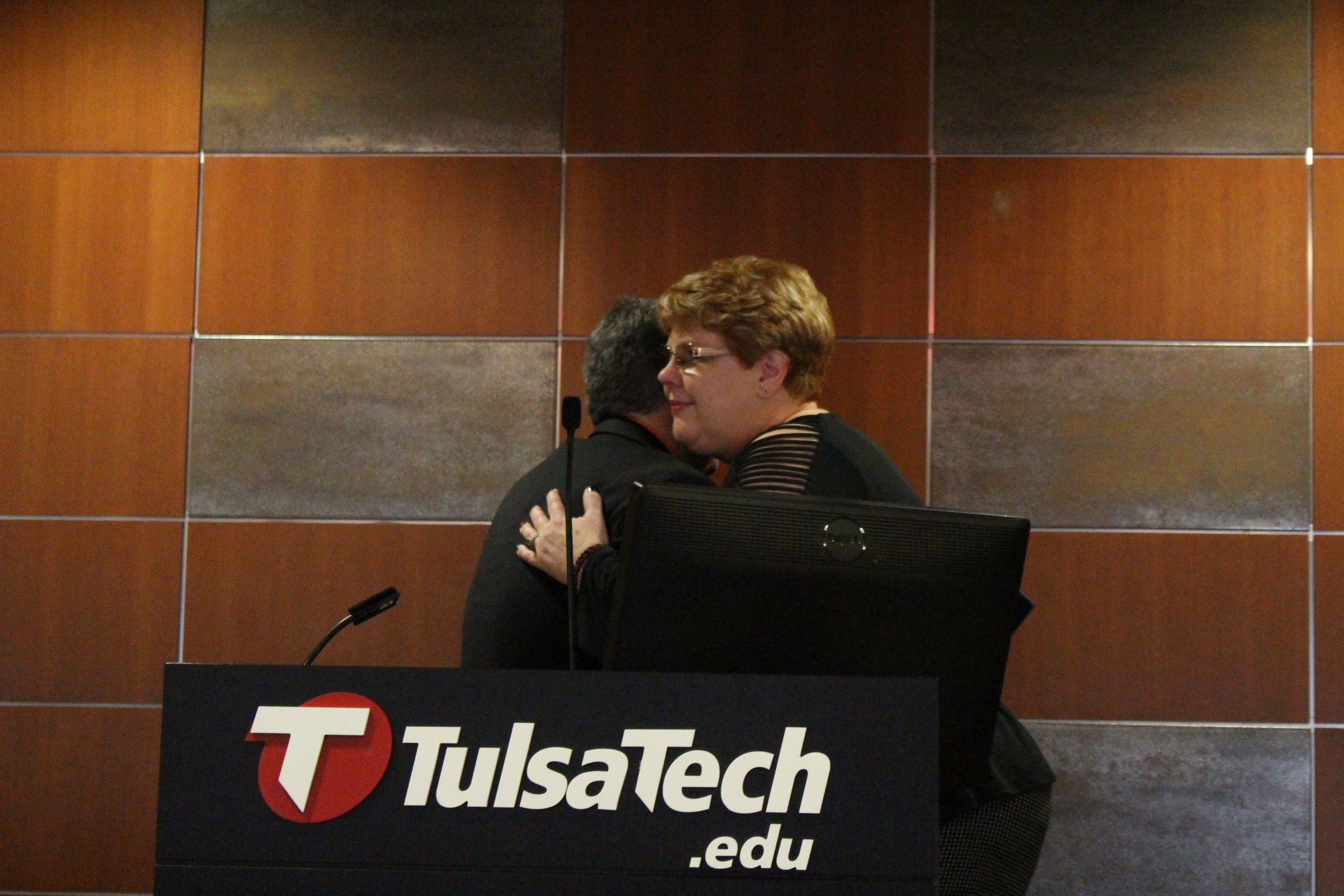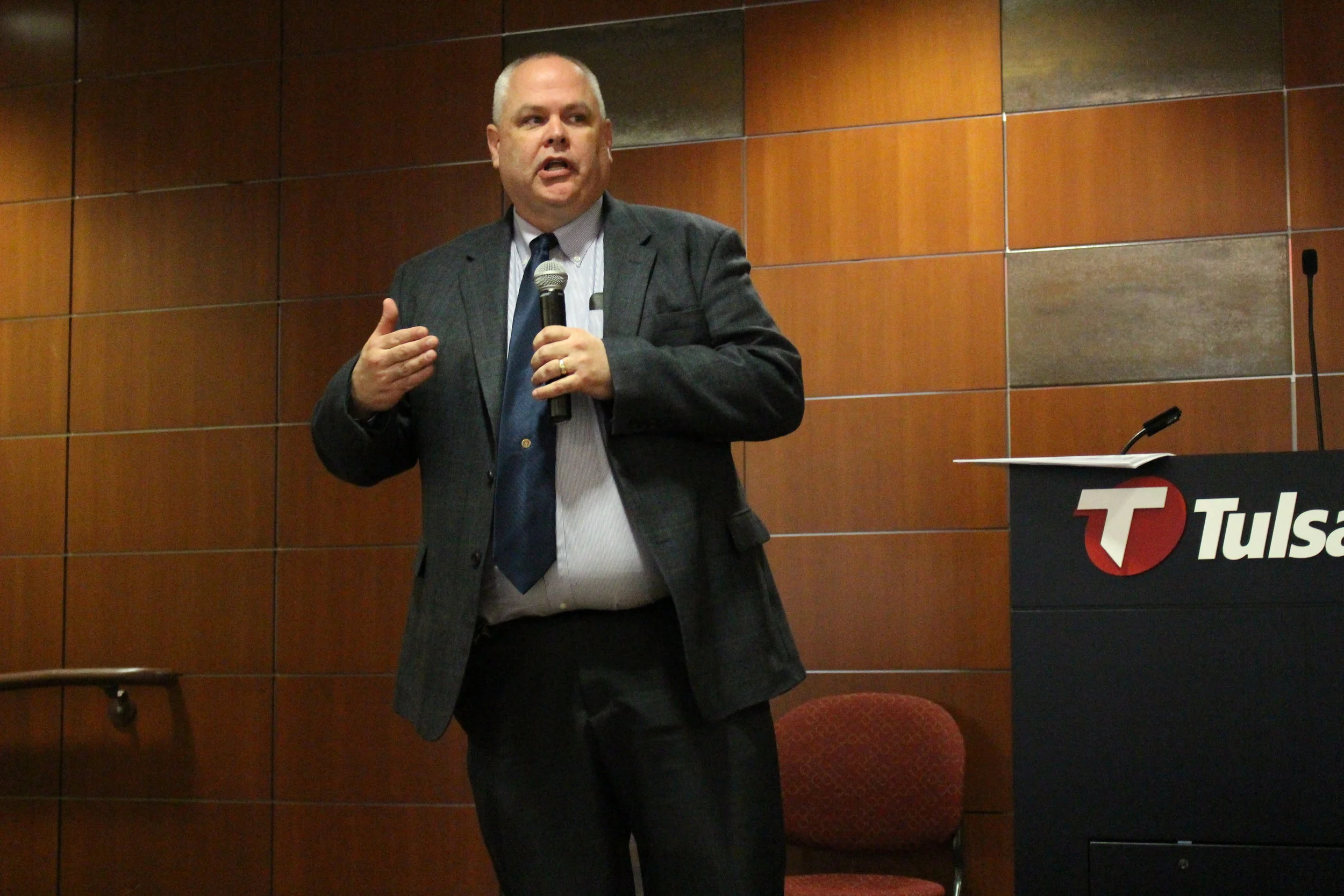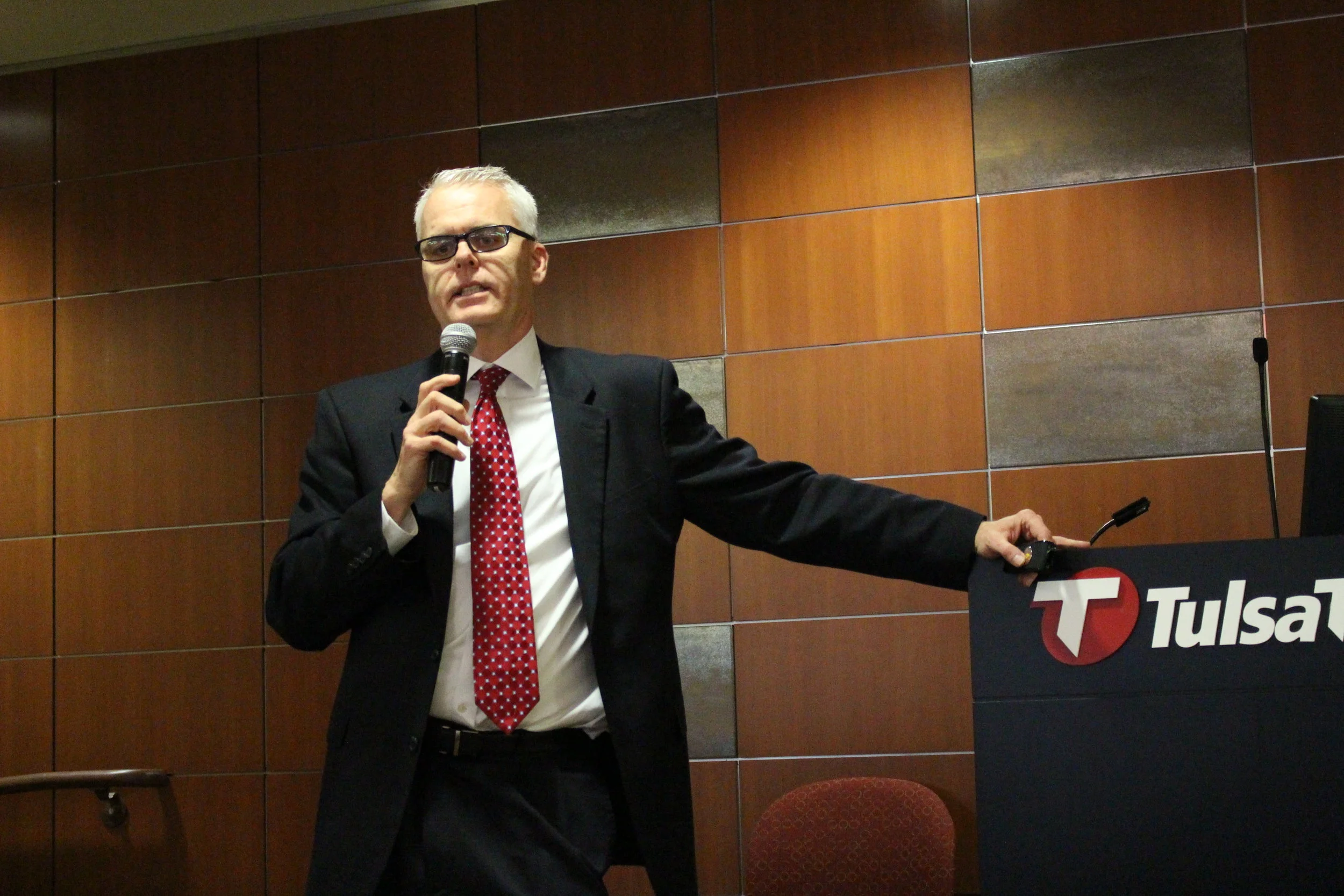The Sand Springs City Council recently voted to adopt a new "Sand Springs 2030 Land Use Master Plan," updating the city comprehensive plan for the first time since 2002. City employees first began the new plan in fall of 2015 and it was approved by the City Planning Commission in May.
The plan hopes to anticipate future development and provide a flexible tool for evaluating development proposals.
Chapter I: Community History and Background
The first chapter of the plan is taken from Carl E. Gregory's The Encyclopedia of Oklahoma History and Culture. The chapter recounts the tale of Charles Page's acquisition of wealth and land, his charitable exploits, and his steps to develop the community that would become Sand Springs.
The town began with the relocation of a failing orphanage, the construction of the Sand Springs Home, the founding of the eighty-acre Sand Springs Park, the formation of the Sand Springs Railway, and finally the incorporation of the City in 1912 with approximately 400 citizens.
Charles Page's generosity included the offering of free land to citizens and a $20,000 relocation bonus for companies. In 1918 he established a "Widow's Colony" alongside the Home. He recruited the relocation of the Kerr Glass Manufacturing Company, Commander Mills, Southwest Box Company, and Sinclair Prairie Refineries. Less than ten years after its incorporation, the community had grown to more than 4,000 individuals.
In 1965 the City annexed the Prattville community on the south side of the Arkansas River, and in 1969 the City chartered a Council-Manager form of government.
Chapter II: Plan Development
In the fall of 2015, the Planning Department launched a community survey that received more than 600 participants. In the summer of 2016 an interactive map was presented to the community, allowing them to identify what type of development they would like to see in which parts of the community. It received over a hundred suggestions, including a revitalization effort along Charles Page Boulevard and a desire to see the site of the former Gerdau Steel Mill utilized.
Following the community surveys, input was also requested from each of the City departments regarding their needs and desires. Community property owners were contacted regarding their desires for undeveloped properties under their ownership, as well as developmental challenges and difficulties they have encountered. The public school district was consulted regarding future plans for growing the district.
Chapter III: Social and Demographic Factors
The 2030 projected population by INCOG (Indian Nations Council of Governments) is 23,083 in Sand Springs. At the 2010 Census, Sand Springs had a total population of 18,906 residents, an increase of 8.3% from the 2000 population of 17,451.
In 2010, the median age of Sand Springs was 36.5 years. The population was 81.8% white, 2.4% African-American, and 8.8% Native American. The average household had 2.63 occupants. The city had a higher employment rate than Tulsa County, Osage County, and the Tulsa Metro. The median household income in 2013 was $54,381, also higher than the Tulsa Metro, Tulsa County, and Osage County.
Chapter IV: Goals and Action Plan Strategies
Land Use
Goal 1: "Sand Springs will be a well-coordinated and planned community with uses that complement and support infrastructure improvements."
Goal 2: "Sand Springs will utilize sound land use planning principals that encourages the appropriate placement of a variety of housing, commercial, recreational, entertainment, and employment options throughout the community."
Goal 3: "The City will maintain land development regulations to manage future growth and development in a manner that protects environmental resources."
Quality of Life
Goal 1: "Sand Springs will be a community that encourages people to be active and healthy and that promotes healthy living and sustainability. This will be accomplished by providing opportunities for active living to all ages year round."
Goal 2: "Sand Springs will have a network of trails, sidewalks and bicycle transportation systems that safely connect parks, schools, libraries, neighborhoods, shopping areas, museums, and other historic sites."
Goal 3: "Sand Springs will be a community that has access to expanded health and wellness care, in addition to attempting to increase the availability of health food choices available to the community."
Goal 4: "The City shall be an aesthetically pleasing community based on a solid foundation of code enforcement and in seeking opportunities to improve zoning and development codes."
Goal 5: "Sand Springs shall have desirable/appealing parks offering recreational opportunities for the community."
Goal 6: "The City will strive to have park equality by providing its citizens throughout the City parks that are well manicured, maintained, and functional for optimal enjoyment."
Goal 7: "Develop Case Community Park into a regional destination by implementing strategically planned park improvements and enhancements, thus creating a public space that is inviting, functional, appealing, and sustainable."
Goal 8: "Continue to develop the Keystone Ancient Forest into a premiere nature preserve/hiking venue in the Tulsa Metropolitan Area."
Goal 9: "Develop City-owned Sports Facilities into premiere venues with top quality playing surfaces, lighting, and amenities."
Infrastructure
Goal 1: "The City of Sand Springs strives to meet or exceed requirements of the EPA and ODEQ regulations at all times in constructing, maintaining, and operating all Water Treatment Pumping, Distribution and Storage Facilities and Systems."
Goal 2: "The City of Sand Springs strives to meet or exceed requirements of the EPA and ODEQ - for providing contemporary and adequate treatment facilities & operations to meet or exceed effluent discharge quality requirements, while making appropriate accommodations for conveyance and collection systems for treatment.
Goal 3: "Plan for new street improvement projects that provide for priority replacements & upgrades to maintain the best possible drivability with sufficient number of lanes, and include provisions for maximum feasible multimodal mobility."
Goal 4: "Plan for rehabilitation/new improvement projects that provide for priority replacements & upgrades to maximize stormwater detention and drainage efficiency and capacity."
Goal 5: "Plan to be a City that takes preventative measures to prevent damaging of the Earth's ecosystems and in order to maintain a high quality of life Sand Springs citizens and the Tulsa Metropolitan Area by managing and disposing of their waste efficiently and safely."
Downtown Area
Goal 1: "Sand Springs shall have a lively, active, and pedestrian oriented downtown with a mix of uses such as restaurants/bars, boutiques, shops, offices, and housing.
Goal 2: "Reinforce and enhance the City's downtown as one of the primary focal points of the community."
Public Safety
Goal 1: "Sand Springs Emergency Services will have excellent law enforcement/firefighter customer service that meets the needs of the citizens now and in the future."
Goal 2: "Sand Springs shall be a community with safe neighborhoods, shopping, and employment areas."
Goal 3: "Sand Springs will proactively maintain/replace public safety technology, equipment, and fleets in order to provide an effective capable workforce."
Goal 4: "Develop, Design, and Construct a Municipal Safety Facility."
Goal 5: "Develop and Maintain a Community Policing Plan."
Economic Development
Goal 1: "The City of Sand Springs will strive to promote local commerce, trade, and commodities by strengthening working relationships with the local/regional Chamber of Commerce, existing businesses, and institutions."
Goal 2: "Aggressively pursue new local, regional, or national restaurant and retail businesses."
Goal 3: "Identify and complete projects that will beautify Sand Springs, assisting with marketing and economic development."
Goal 4: "Evaluate and consider the acquisition of real estate for future development purposes."
Goal 5: "Encourage and engage Subdivision and Multi-Family Developers/Developments."
Goal 6: "Develop an Economic Development website resource hub and strive to educate and advance the objective of all involved with the City to be involved in assisting with economic development as possible."
Goal 7: "Sand Springs will have a strong independent local economy that compliments the surrounding region but is not dependent on it."
Chapter V: Future Development Plan
"The Plan is a policy document that lays out the blueprint of how the community should grow over time and where certain uses should be placed relative to their intensity. Other factors such as underlying zoning patterns, adjoining communities land use plans, and future capital improvements also played a role in determining where the land use categories were placed. However, the plan is a plan and is not inflexible or concrete. From time to time, there will be certain uses that are proposed that will merit additional evaluation and create the possibility for Plan amendments."




















